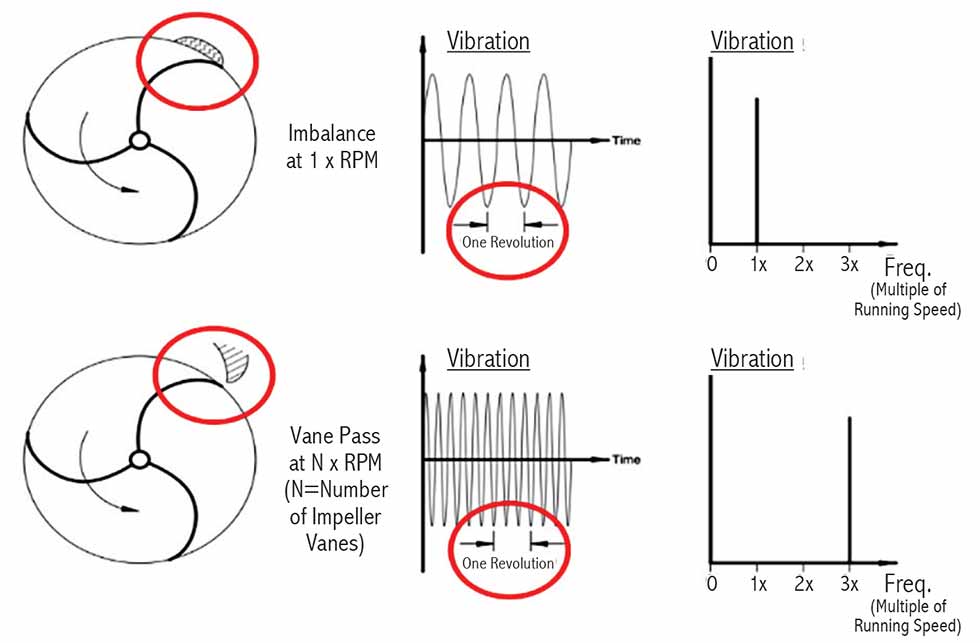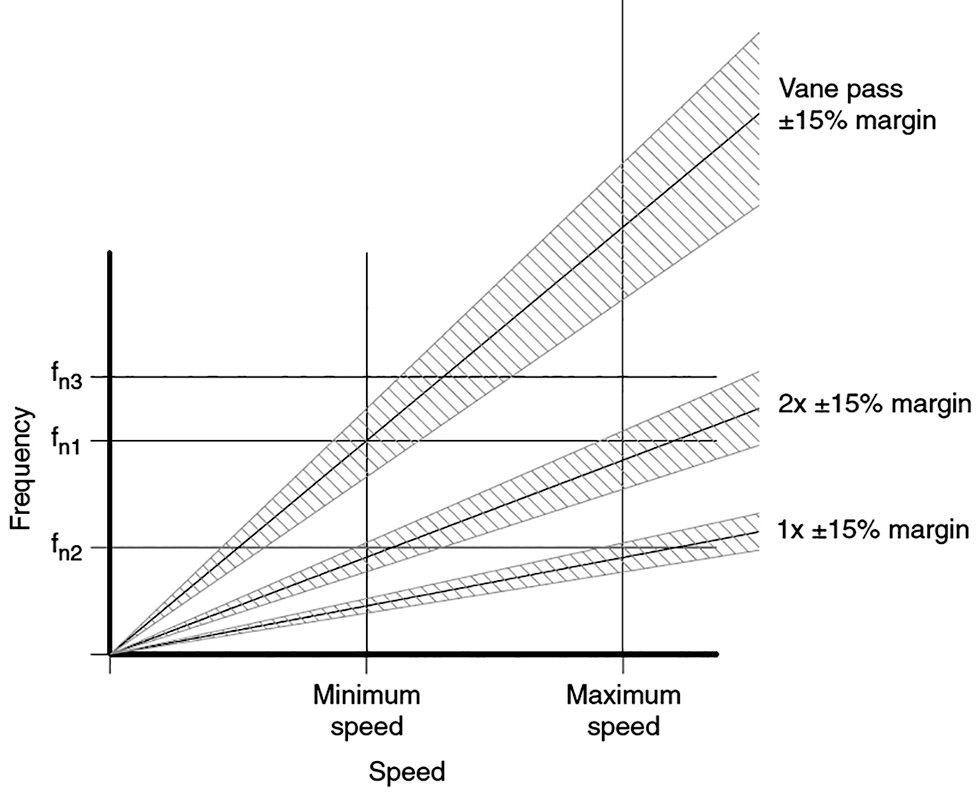
When using variable speed pumping in an HVAC system, should extra precautions be taken to limit the chance of vibration?
In any system that uses a variable speed drive, the chance of amplified forced vibration due to interaction with natural frequencies increases. Forced vibration is due to a mechanical or hydraulic component of the pump.
 IMAGE 1: Forced vibration at 1 times operating speed due to imbalance, and 3 times operating speed due to impeller vanes
IMAGE 1: Forced vibration at 1 times operating speed due to imbalance, and 3 times operating speed due to impeller vanesImage 1 shows imbalance and vane pass forces that lead to vibration in the pumping equipment. Note that these forces will always be present and are normal, and also note that these forces occur at different frequencies.
Image 2 illustrates a Bode plot, which is a tool used by analysts to evaluate if a forced vibration will interact with a natural frequency. This plots both forcing frequencies and natural frequencies as a function of operating speed. Where the lines intersect is where resonant vibration is a potential problem.
 IMAGE 2: Bode plot of forced vibration and natural frequencies versus operating speed. Intersecting lines indicate possible resonance.
IMAGE 2: Bode plot of forced vibration and natural frequencies versus operating speed. Intersecting lines indicate possible resonance.Upfront dynamic analysis is sometimes warranted when using variable speed pumping to limit the risk of resonant vibration.
Generally, HVAC pumps do not require upfront dynamic analysis and rarely have it specified upfront. Dynamic analysis is seldom done for HVAC pumps because:
- Most HVAC systems primarily consist of between-bearings or overhung horizontal pumps of a well-proven design, typically running at four-pole or slower speeds.
- Booster service typically uses vertically suspended pumps and smaller units often run at two-pole speed. These pumps are usually catalog units of well-proven design.
- The HVAC market is generally price-sensitive and competitive prices typically do not bear the cost of dynamic analysis.
However, vertically suspended pumps on variable frequency drives (VFDs) occasionally require a level 1 structural analysis to determine the reed frequency.
For more information about the HVAC and building markets and variable speed pumping, refer to ANSI/HI 9.6.8 Rotodynamic Pumps Guideline for Dynamics of Pumping Machinery and the “Pump Application Guideline for Commercial Building Services” at pumps.org.
Read more HI Pump FAQs content by clicking here.

